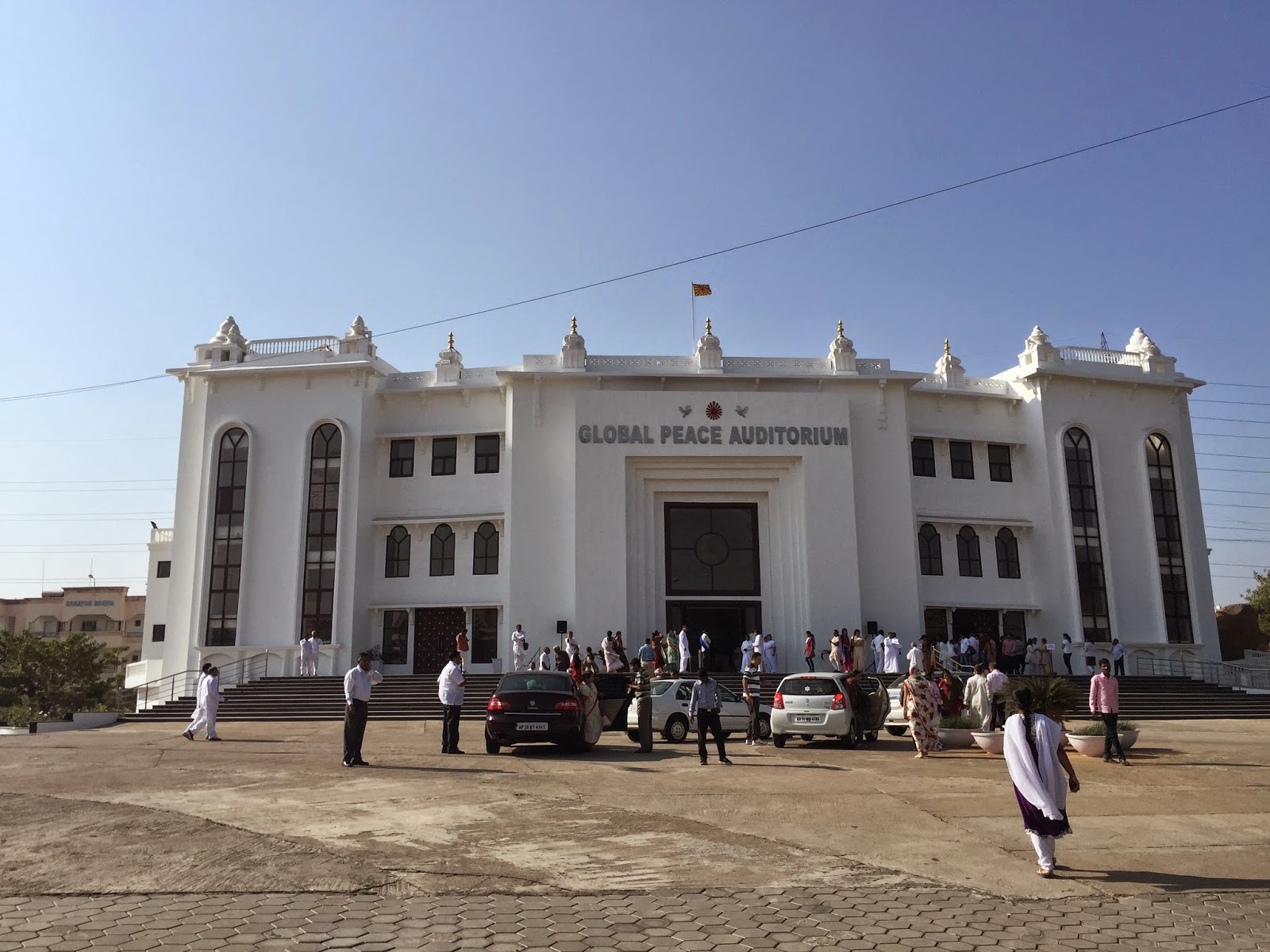Om Shanti. This mantra may be a greeting or a farewell. It means something like "I am a soul, an eternal being."
A woman of the Brahma Kumari, a Hindu oriented religious movement in India, greeted the audience with these words before introducing guru Sister Shrivani at the Global Peace Auditorium in Gachibowli Sunday.
At breakfast Sunday morning a Parisian professor of physics asked if we'd like to accompany him to hear a well-known guru speak. We were dressed in white--which proved fortuitous--so off we went in auto rickshaw to a pristine, white auditorium expecting nothing and everything.
As foreigners, we were warmly welcomed by members of the Brahma Kumari as we approached. The women were dressed in white saris, the men in white kurtas. We were rushed through the immaculate white marble halls to the VIP entrance--I know not why--and ushered to fourth-row seats in the hushed state-of-the-art auditorium. Contemplative music and nature slides set the mood for a white-robed Brahma Kumari who introduced the Chief Minister of the State of Andhra Pradesh and other officials accompanied by body guards and an armed soldier.
After a ceremony of flower, shawl, and gift-giving, the spiritual leader, a soft-spoken woman with the calm presence of a Hindu Mother Theresa, sat in a white chair and began to speak. She reminded me of Celia Ruedas. Her combined Hindu and English relayed the timeless message of peace, destiny, humility, happiness, acceptance, and renewed commitment. The auditorium was silent except for the sound of her soothing words and, naturally, the musical notifications of cell phones. The talk ended with an invitation to meditate at a temple on the grounds. Nothing was for sale and no money was collected.
A woman of the Brahma Kumari, a Hindu oriented religious movement in India, greeted the audience with these words before introducing guru Sister Shrivani at the Global Peace Auditorium in Gachibowli Sunday.
 |
| Global Peace Auditorium in Gachibowli |
 |
| Interior lobby of the auditorium |
At breakfast Sunday morning a Parisian professor of physics asked if we'd like to accompany him to hear a well-known guru speak. We were dressed in white--which proved fortuitous--so off we went in auto rickshaw to a pristine, white auditorium expecting nothing and everything.
As foreigners, we were warmly welcomed by members of the Brahma Kumari as we approached. The women were dressed in white saris, the men in white kurtas. We were rushed through the immaculate white marble halls to the VIP entrance--I know not why--and ushered to fourth-row seats in the hushed state-of-the-art auditorium. Contemplative music and nature slides set the mood for a white-robed Brahma Kumari who introduced the Chief Minister of the State of Andhra Pradesh and other officials accompanied by body guards and an armed soldier.
After a ceremony of flower, shawl, and gift-giving, the spiritual leader, a soft-spoken woman with the calm presence of a Hindu Mother Theresa, sat in a white chair and began to speak. She reminded me of Celia Ruedas. Her combined Hindu and English relayed the timeless message of peace, destiny, humility, happiness, acceptance, and renewed commitment. The auditorium was silent except for the sound of her soothing words and, naturally, the musical notifications of cell phones. The talk ended with an invitation to meditate at a temple on the grounds. Nothing was for sale and no money was collected.
 |
| Sister Shrivani |
After we returned to campus, we asked several visiting professors what they thought of Sister Shrivani. One initially used the word "cult" to talk about the Brahma Kumaris movement, but with the difficulties of communicating, I wasn't sure if the word had the same connotation it does in American English.
Ultimately these professors referred to it as a popular religious movement--particularly in suburban India--because of the emphasis on meditation and healthy living as ways to cope with the stress of contemporary life.
The following youtube link is of a talk largely in Hindu. It begins with a meditation at about 6 minutes, but you can get the idea. I'd love to know your impressions.
 |
| The stage. |













































